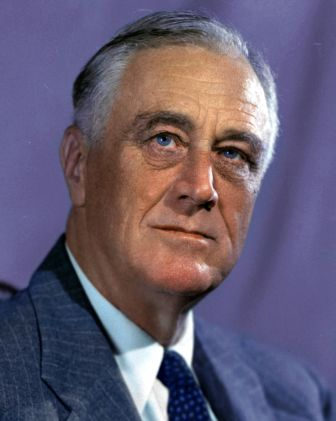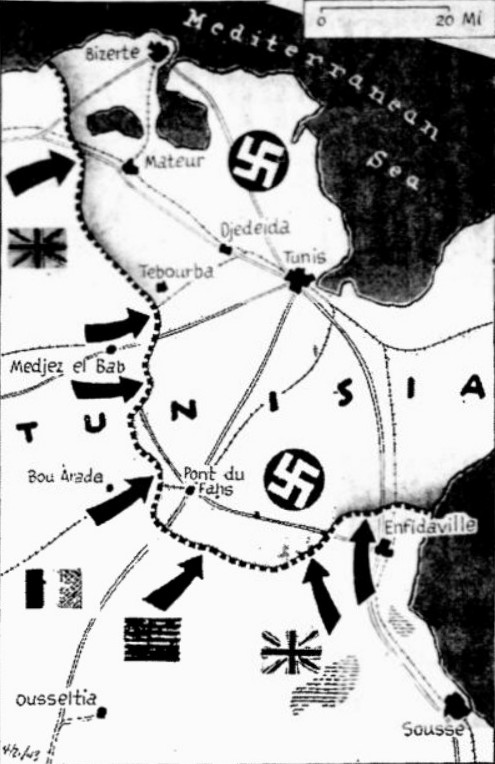President Roosevelt’s address at Monterrey, Mexico
April 20, 1943, 11:00 p.m. EWT

Broadcast audio:
Senor Presidente de La Republica Mexicana, my friends and good neighbors:
Your Excellency’s friendly and cordial expressions add to the very great pleasure that I feel at being here on Mexican soil.
It is an amazing thing to have to realize that nearly 34 years have passed since Chief Executives of our two countries have met face to face. I hope that in the days to come every Mexican and every American President will feel at liberty to visit each other just as neighbors visit each other – just as neighbors talk things over and get to know each other better.
Our two countries owe their independence to the fact that your ancestors and mine held the same truths to be worth fighting for and dying for. Hidalgo and Juarez were men of the same stamp as Washington and Jefferson. It was, therefore, inevitable that our two countries should find themselves aligned together in the great struggle which is being fought today to determine whether this world shall be free or slave.
The attacks of the Axis powers during the past few years against our common heritage as free men culminated in the unspeakable and unprovoked aggressions of December 7, 1941, and of May 14, 1942, and the shedding of blood on those dates of citizens of the United States and of Mexico alike.
Those attacks did not find the Western Hemisphere unprepared. The 21 free republics of the Americas during the past ten years have devised a system of international cooperation which has become a great bulwark in the defense of our heritage and the defense of our future. That system, whose strength is now evident even to the most skeptical, is based primarily upon a renunciation of the use of force, and is based on the enshrining of international justice and mutual respect as the governing rule of conduct by all nations everywhere.
In the forging of that new international policy the role of Mexico has been outstanding. Mexican Presidents and Foreign Ministers have appreciated the nature of the struggle with which we are now confronted at a time when many other nations much closer to the focus of infection were blind.
The wisdom of the measures which the statesmen of Mexico and the United States and of the other American Republics have adopted at inter-American gatherings during recent years has been amply demonstrated. They have succeeded because they have been placed in effect, not only by Mexico and the United States, but by all except one of the other American Republics.
You and I, Mr. President, as Commanders-in-Chief of our respective armed forces, have been able to concert measures for common defense. The harmony and the mutual confidence which have prevailed between our armies and navies is beyond praise. Brotherhood in arms has been established.
The determination of the Mexican people and of their leaders has led to production on an all-out basis of strategic and vital materials so necessary to the forging of the weapons destined to compass the final overthrow of our common foes. In this great city of Monterrey, I have been most impressed with the single-minded purpose with which all the forces of production are joined together in the war effort.
And too, Mexican farm workers, brought to the United States in accordance with the agreement between our two Governments, the terms of which are fully consonant with the social objectives that we cherish together, are contributing their skill and their toil to the production of vitally needed food.
But not less important than the military cooperation and the production of supplies needed for the maintenance of our respective economies has been the exchange of those ideas and of those moral values which give life and significance to the tremendous effort of the free peoples of the world. We in the United States have listened with admiration and with profit to your statements and addresses, Mr. President, and to those of your distinguished Foreign Minister. We have gained inspiration and strength from your words.
In the shaping of a common victory our peoples are finding that they have common aspirations. They can work together for a common objective. Let us never lose our hold upon that truth. It contains within it the secret of future happiness and prosperity for all of us on both sides of our unfortified borders. Let us make sure that when our victory is won, when the forces of evil surrender – and that surrender shall be unconditional – then we, with the same spirit and with the same united courage, will face the task of the building of a better world.
There is much work still to be done by men of good will on both sides of the border. The great Mexican people have their feet set upon a path of ever greater progress so that each nation may enjoy and each citizen may enjoy the greatest possible measure of security and opportunity. The government of the United States and my countrymen are ready to contribute to that progress.
We recognize a mutual interdependence of our joint resources. We know that Mexico’s resources will be developed for the common good of humanity. We know that the day of the exploitation of the resources and the people of one country for the benefit of any group in another country is definitely over.
It is time that every citizen in every one of the American republics recognizes that the Good Neighbor policy means that harm to one Republic means harm to each and every one of the other republics. We have all of us recognized the principle of independence. It is time that we recognize also the privilege of interdependence – one upon another.
Mr. President, it is my hope that in the expansion of our common effort in this war and in the peace to follow we will again have occasion for friendly consultation, in order further to promote the closest understanding and continued unity of purpose between our two peoples.
We have achieved close understanding and unity of purpose, and I am grateful to you, Mr. President, and to the Mexican people, for this opportunity to meet you on Mexican soil, and – to call you friends.
You and I are breaking another precedent. Let these meetings between Presidents of Mexico and the United States recur again and again and again.

